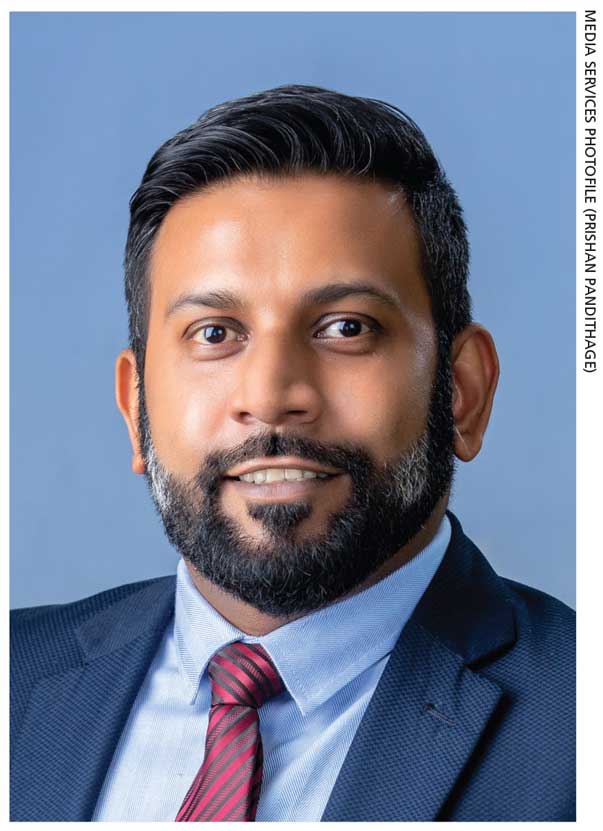FMCG SECTOR

EMERGING BUSINESS MODELS
Janmesh Paul Anthony explains how the FMCG sector has been transformed
Compiled by Yamini Sequeira
 Q: How is the FMCG sector faring currently and where do you see fast-moving consumer goods heading?
Q: How is the FMCG sector faring currently and where do you see fast-moving consumer goods heading?
A: The FMCG sector is faced with many challenges in the current environment due to the rising cost of raw materials and packaging, as well as manufacturing and operational expenses.
Furthermore, the depletion of disposable incomes is resulting in consumers having to choose between categories.
Most FMCG businesses have become resilient, and prioritised the safety and wellbeing of their employees, as well as the communities they serve.
Many such entities had to impose price increases to mitigate the rise in costs. Businesses are also improving efficiency to ensure they can withstand multiple challenges.
Critical factors for success in the future will be innovation, flexibility, better planning and forecasting, sound investments in technology, automation, a motivated workforce and resilience.
Q: Are businesses paying sufficient attention to building, developing and sustaining brands? And how do you rate local entities compared to their global counterparts in this regard?
A: Yes, there are many success stories of enterprises that have built strong brands in the FMCG sector.
International businesses had an edge in the past in terms of new tools and global learning, which helped shape powerful brands. In this digital era however, the world is becoming smaller and the same knowledge is available to everyone.
Many local brands have performed exceptionally well domestically and internationally, and been recognised by global marketing and advertising organisations.
Q: What are among the emerging consumer trends and expectations?
A: Consumers have always demanded the best products in which they see value for money at prices they’re willing to pay. There is now the additional requirement of safety, as well as the need for hygienically produced and packed products.
They also seek products that have been sourced and produced sustainably by enterprises, which give back to the communities and environment in which they operate.
Consuming foods that boost the immune system in addition to providing nutrition has become a global trend. Many FMCG food brands have made these benefits available to suit the needs of consumers.
And following recent changes in the food regulatory environment, consumers are more aware of what they consume.
Q: What strategies are being used to attract millennials when it comes to branding and marketing?
A: Branding and marketing strategies vary based on the industry or sector, and the type of product or service offered. A healthy approach would be to identify cohorts in defined and segmented target audiences however, and understand their behaviour to craft better strategies that will drive businesses.
Millennials – who are now in their late 20s and 30s – constitute the most lucrative market; and they’re in the process of reaching their full purchasing power. However, gen Z consumers (those in their teens to early 20s) are a completely different segment.
While millennials use three screens on average, gen Z uses five – and they expect brands to move as seamlessly around digital devices as they do and offer a unified experience, both in stores and digitally.
Brands need to ensure that their messages are brief, to the point and use the language of potential consumers. The average gen Z individual has an attention span of about eight seconds. Social media is important to them but their usage differs from how millennials use it.
Authentic experiences and two-way conversations are imperative, and it’s important to be realistic and relatable while humanising a brand. Brands should also state their purpose up front and show that they care.
Q: How do you view the growth of the retail sector in the context of construction of new malls? And how will this affect ‘mom-and-pop shops’?
A: The retail landscape has changed drastically over the last decade or two with the rise of modern trade. However, many large traditional retail outlets have transformed themselves into small and medium-size modern trade outlets, and are able to withstand the competition.
In most cases, the second generation owners of these outlets are playing a vital role in transforming their businesses. This change is key to the survival of traditional retail outlets in the future.
In addition, there is innate strength in traditional retailers in the context of personalised service and connections with customers through relationships that have been built over generations. Furthermore, shoppers often purchase their goods on credit due to the connections they have and settle their bills at the end of the month.
These relationships were clearly demonstrated when the country was under a series of lockdowns. Traditional retailers who operated out of their homes in most cases were able to distribute essentials to their customers when there was no access to modern trade.
However, e-commerce increased during the lockdowns, indicating that it can potentially transform the future of retailing in the country. In fact, some shoppers still use e-commerce sites to purchase their goods.





Leave a comment